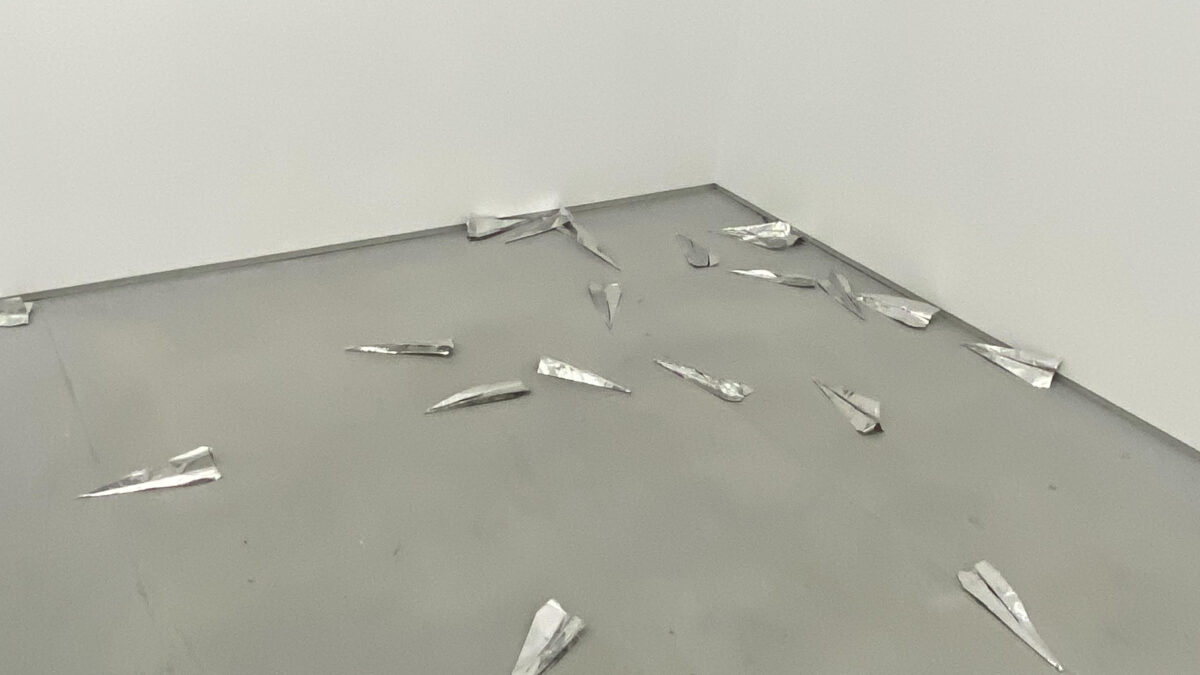Gallery Map #2: https://www.google.com/maps/d/edit?hl=en&mid=1G1Wo5hSXKQ3RlenhbqjSDLlCO-NW7CEH&ll=40.71246011220869%2C-73.93431299999997&z=13
In the first half of the day we met with Emily Davidson of the Canada gallery in the lower part of Manhattan’s Tribeca neighborhood. Here, we were able to see the artwork of Michael Mahalchick, a multimedia artist with an interest in performance. Originally from Pottsville, PA – Mahalchick studied sculpture and performance arts at Cal Arts and later Tyler school of art. His very conceptual works often include many recycled materials such as those featured in his gallery exhibition, which are primarily composed of plastics and latex. I really enjoyed the unique experience we were able to have at the Canada Gallery. Not only were we able to consult with an industry professional but we were able to see the artwork of two very interesting artists (Micheal Mahalchick and Aurora Pellizzi). I really liked the work of both of these artists even though they were very different. Pellizzi’s work was less abstract than that of Mahalchick but just as striking. In her exhibition ‘Transfiguration” she weaves intricate pieces of the feminine body and dyes the fibers with many naturally occurring pigments such as, cochineal (for red) or fresh flowers like marigolds (for yellows). I appreciated the shock value that would have come from Mahalchicks work as the viewer is confronted with a wall of very human looking latex masks. Additionally, the meaning behind his work is not readily apparent and the artist makes you work to understand it, while also giving you the opportunity to interpret your own meaning. It reminds me of the very little I know about modern/contemporary art – where creators such as Marcel Duchamp who gave meaning to seemingly insignificant objects while also allowing the audience to delineate their own meanings from the work. I also appreciated the time and delicacy it must have taken to make his works. I have only worked with latex once or twice as a result of an interest in SFX makeup. In my experience it was a very difficult material that was rather thin and viscous. It also wasn’t all that cheap. Our conversations with Emily brought up some very interesting topics about the sustainability of the art world.
Later in the day we visited a number of different galleries all located relatively close to the Canada Gallery – I think the fathers was only a few blocks away in Soho. These galleries were different from the upper east side ones in the sense that they were often larger, more roomy and featured the world of up and coming artists rather than the work of already well known and well established artists, What struck me about these works was the range of sizes as well as the range of mediums and the incorporation of found or recycled elements as well as the incorporation of the gallery space itself. This made me think about the idea of performance within art and how the spaces were transformed in order to showcase an idea – in a sort of performative way. Artists such as Pamela Council also did this, with her use of rubber shoe material and checkerboard floor tile. It was also interesting how in the Chapter Gallery there were holographic paper plane like pieces on the floor. They almost dare the viewer to become a participant in the show by stepping on kicking them. Most of the work ealt very modern and very experimental. It was as if the artists were not afraid, even if their work didn’t sell – they weren’t willing to compromise on their ideas or artistic vision.
I also loved the artwork that was shown in the James Cohan gallery. The artist, Alison Elizabeth Taylor focused on scenes of everyday life and her experience in Brooklyn NY during the quarantine period of the Covid-19 pandemic. Collectively, the works in Future Promise comprise a love letter to the resilience of a neighborhood and a community. I loved how dynamic her pieces felt and the color combinations she used. Her background and nature scenes were not only beautiful but oddly nostalgic as well – sort of keeping in mind that these works focused on a period of chaos when many were wishing for things to be the way they once were. Additionally, her compositions were really interesting and her material choices, especially the bare woodgrains, created a sense of movement throughout her works.
| Gallery: | Artist: |
| Canada Gallery | Michael Mahalchick, Aurora Pellizzi |
| Andrew Kreps | Micheal Dean |
| Bortolami Gallery | Marina Rheingantz, Roberto Burle Marx, Santídio Pereira |
| James Cohan Gallery | Alison Elizabeth Taylor |
| Denny Demin Gallery | Pamela Council |
| Broadway Gallery | Sarah Cain |
| Chapter Gallery | Sam Anderson – Cara Benedetto – Patrick Berran – Milano Chow – Mira Dancy – Jesse Darling – Dalton Gata – Adam Gordon – Paul Heyer – Cheyenne Julien – Ann Greene Kelly – Willa Nasatir – Erin Jane Nelson – Tourmaline – Stella Zhong |
| P.P.O.W. | Brittney Anne Harvey – Harry Gould Harvey IV – Alex Ito – Rajkamal Kahlon – Ding Q. Lê – Daniel T. Gaitor-Lomack – Carlos Motta – Carlos Reyes – Dread Scott – Astrid Terrazas – Chiffon Thomas – Faith Wilding |
| Jeffery Deitch | Diana Yesenia Alvarado – Alex Anderson- Trisha Baga – Alex Becerra – Genesis Belanger – Seth Bogart – Chen Nien Ying – Woody De Othello – Sharif Farrag – Ryan Flores – Dominique Fung – Melvino Garretti – Raven Halfmoon – Kahlil Robert Irving – Elizabeth Jaeger – Devin B. Johnson – Heidi Lau – Grant Levy-Lucero – Candice Lin – Jasmine Little – Lindsey MendickKeegan Monaghan – Masato Mori – Ruby Neri – Brian Rochefort – Jennifer Rochlin – Brie Ruais – Sterling Ruby – Sally Saul – Alake Shilling – Adam Silverman – Jessica Stoller – Katie StoutMagdalena Suarez Frimkess – Wade Tullier – Amia Yokoyama – Bari Ziperstein |
